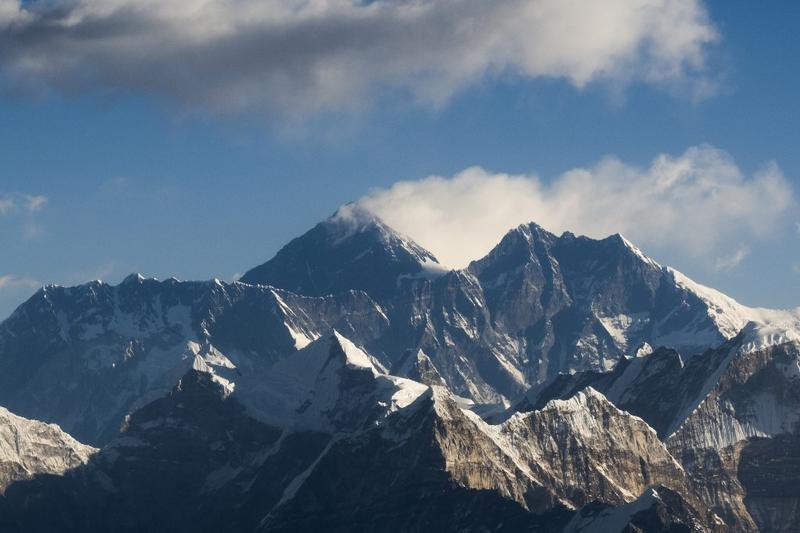 This Feb 7, 2020, photo taken from a commercial aircraft shows an aerial view of Qomolangma (center) and the Himalayan mountain range, some 140 km north-east of Kathmandu. (JEWEL SAMAD / AFP)
This Feb 7, 2020, photo taken from a commercial aircraft shows an aerial view of Qomolangma (center) and the Himalayan mountain range, some 140 km north-east of Kathmandu. (JEWEL SAMAD / AFP)
KATHMANDU - Following the footsteps of China to close the Qomolangma expeditions from the northern side, Nepal's government has also decided to call off all spring expeditions from the south face in the wake of the COVID-19 outbreak.
Spring is the major climbing season in Nepal, which begins in April and extends through May, generating millions of dollars of revenue through the issuing of expedition permits
The decision was taken on Thursday night by a high-level coordination committee under the Deputy Prime Minister and Defence Minister Ishwor Pokhrel after the outbreak was announced as a pandemic by the World Health Organization.
"All the permits that have been issued so far or were about to be issued for spring expeditions in 2020 have been called off for now," Meera Acharya, Director at the Department of Tourism (DoT), the authorized government body that issues climbing permits, confirmed to Xinhua.
ALSO READ: Nepal issues stringent rules to make spring climbing safer
According to the official, the department had already issued five permits for spring expeditions and were in the final step of issuing other permits.
Following the closure from China's side, many foreign climbers were eyeing the expedition of the world's tallest peak from Nepal, according to the expedition organizers.
Rishi Bhandari, head of a leading expedition company Satori Adventures, expressed dissatisfaction with the decision by the government at the last moment.
"We had already made all the preparations and our clients were ready for the expeditions. It's a big loss not just for expedition companies, but for the whole tourism industry," Bhandari told Xinhua.
Bhandari's company alone had eight foreign clients for Qomolangma, seven for Lhotse and five for Annapurna, all mountains above 8,000 meters.
"The government could have at least given permits for mountains of above 8,000 meters after verifying health documents, which could be a big boost to tourism revenue," he added.
Spring is the major climbing season in the Himalayan country, which begins in April and extends through May, generating millions of dollars of revenue through the issuing of expedition permits.
READ MORE: Expert climbers skeptical proposed rules for Everest will stop deaths
Qomolangma has not only been an identity of this developing nation but also a major source of revenue. According to Nepali regulation, every foreigner needs to pay 11,000 US dollars as royalty while a Nepali climber only has to pay NRs 75,000 (around US$650) to scale the mountain.
An expedition to the world's highest peak usually takes 45 to 90 days, a short climbing window, depending on favorable weather, and generally falls after mid-May.


